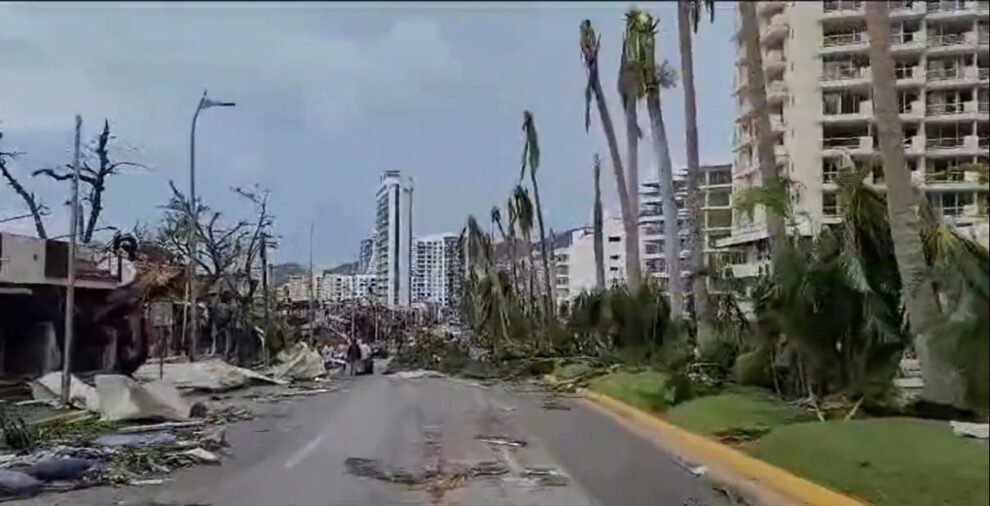Hurricane Otis caused at least 27 deaths and major damage as it lashed Mexico’s resort city of Acapulco as a scale-topping category 5 storm, officials said Thursday, in what residents called a “total disaster.”
Otis crashed into Acapulco with furious winds of 165 miles (270 kilometers) per hour, shattering windows, uprooting trees and largely cutting off communications and road links with the region.
President Andres Manuel Lopez Obrador arrived at the scene late Wednesday, after his convoy found roads blocked by landslides and other debris, forcing officials to abandon their vehicles and walk part of the way.
Some residents slogged for hours through mud and debris in an attempt to find food and shelter.
“Acapulco is a total disaster. It is not what it was before,” said 24-year-old Eric Hernandez, who made the decision to leave on foot.
“The shops had all been looted, people were fighting for things. So we decided to walk as there wasn’t anything left there,” he said.
Others said an overflowing river and collapsed bridges had cut off communities near Acapulco, home to about 780,000 people.
“People were left homeless, there’s no electricity,” said Israel Perez, a 21-year-old baker.
Security Minister Rosa Icela Rodriguez told a news conference Thursday that 27 people were dead and four were missing.
Three of those unaccounted for were soldiers, Lopez Obrador said after returning to Mexico City.
He described the storm as “disastrous” and said that it was only thanks to the actions of people who sought shelter that there were not more deaths.
The government would begin an airlift to deliver aid and materials to the region, Lopez Obrador said.
Telephone communications began to resume while the main highway from Mexico City to Acapulco was reopened.
– ‘Like an earthquake’ –
Otis rapidly intensified within hours from a tropical storm to the most powerful category of the five-step Saffir-Simpson scale before hitting land, taking authorities by surprise.
“It’s unprecedented in the country in recent times, not only because of the way it strengthened so quickly but also the magnitude of the hurricane,” Lopez Obrador said.
People recounted a terrifying ordeal as Otis made landfall overnight Tuesday-Wednesday, causing major structural damage.
“The building shook as if there was an earthquake,” Citlali Portillo, a tourist accommodation manager, told the television channel Televisa, adding that she had taken shelter in a bathtub.
The storm overturned vehicles and even left a car in the lobby of a luxury hotel, surrounded by broken glass and debris.
Soldiers worked to clear the streets of mud and fallen trees.
Some residents were seen taking food, water and other goods from looted stores.
Hurricanes hit Mexico every year on both its Pacific and Atlantic coasts, usually between May and November, though few make landfall as a Category 5.
In October 1997, Hurricane Pauline hit Mexico’s Pacific coast as a Category 4 storm, leaving more than 200 people dead, some of them in Acapulco.
It was one of the deadliest hurricanes to batter Mexico.
In October 2015, Patricia became the most powerful hurricane ever recorded, pummeling Mexico’s Pacific coast with sustained winds of 200 miles per hour.
But the storm caused only material damage and no deaths as it made landfall in a sparsely populated mountainous area.
Scientists have warned that storms are becoming more powerful as the world gets warmer with climate change.
